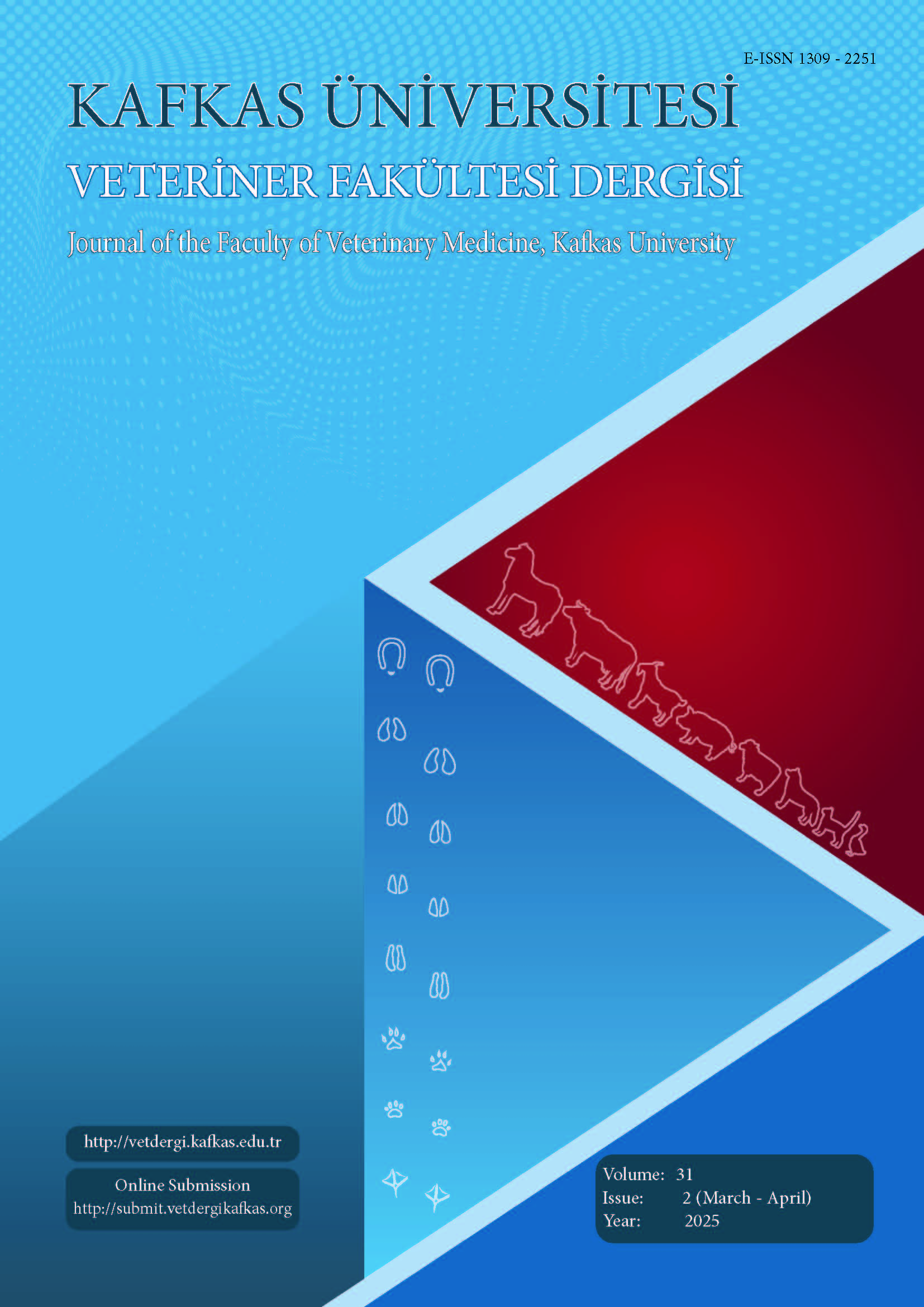
This journal is licensed under a Creative Commons Attribution-NonCommercial 4.0 International License
Kafkas Üniversitesi Veteriner Fakültesi Dergisi
2025 , Vol 31 , Issue 2
The Use of Probiotic Footbaths for the Treatment of Ovine Interdigital Dermatitis
1Department of Surgery, Faculty of Veterinary Medicine, University of Balıkesir, TR-10145 Balıkesir - TÜRKİYE2Department of Microbiology, Faculty of Veterinary Medicine, University of Balıkesir, TR-10145 Balıkesir - TÜRKİYE DOI : 10.9775/kvfd.2024.33091 Ovine interdigital dermatitis (OID) is a mild infection of the skin that may lead to more serious infections, such as foot rot and foot abscess. The objective of this study was to investigate the efficacy of probiotic foot baths in controlling ovine interdigital dermatitis (OID). Prior to and following the administration of the treatment, swab samples were obtained from sheep exhibiting symptoms of OID. Each sheep underwent a single daily foot bath session for a period of five days, with each session lasting five minutes. The solution, comprising of Lactobacillus acidophilus, Lacticaseibacillus rhamnosus, Lacticaseibacillus casei and Bifidobacterium bifidum, was prepared with a probiotic microorganism concentration of 10⁶ CFU per millilitre. The most prevalent bacterial strain was Staphylococcus aureus (36.62%), while Fusobacterium necrophorum (1.91%) was isolated and identified at the lowest frequency. Prior to the application of the probiotic solution, the total microbial load was 4.693±0.644 (TAMC), 3.969±0.625 (TC) and 3.612±0.644 (EC) log CFU/mL. Following the application of the probiotic foot bath, the corresponding values were 2.269±0.739, 1.823±0.783 and 1.538±0.742 (P<0.05). The results show that probiotic foot baths are effective for reducing pathogenic microbial loads in sheep feet. The study emphasises the importance of non-antibiotic strategies in the management of foot diseases and demonstrates the potential of probiotics as an alternative approach. Keywords : Foot baths, Foot diseases, Ovine interdigital dermatitis, Probiotics










